Embarking on the journey of acquiring a full tattoo bodysuit is one of the most significant and profound commitments an individual can make in the realm of body art. It transcends the idea of merely collecting individual pieces; it is about transforming the entire human form into a cohesive, flowing, and deeply personal canvas. This isn’t a decision made lightly, nor is it a project completed quickly. A true bodysuit is a monumental undertaking, demanding extraordinary dedication, financial investment, and a profound level of trust between collector and artist. For those contemplating this ultimate expression of self through ink, understanding the intricate layers of planning, execution, and long-term care is paramount to achieving a masterpiece that truly stands the test of time.
Unveiling the commitment: What a tattoo bodysuit really means
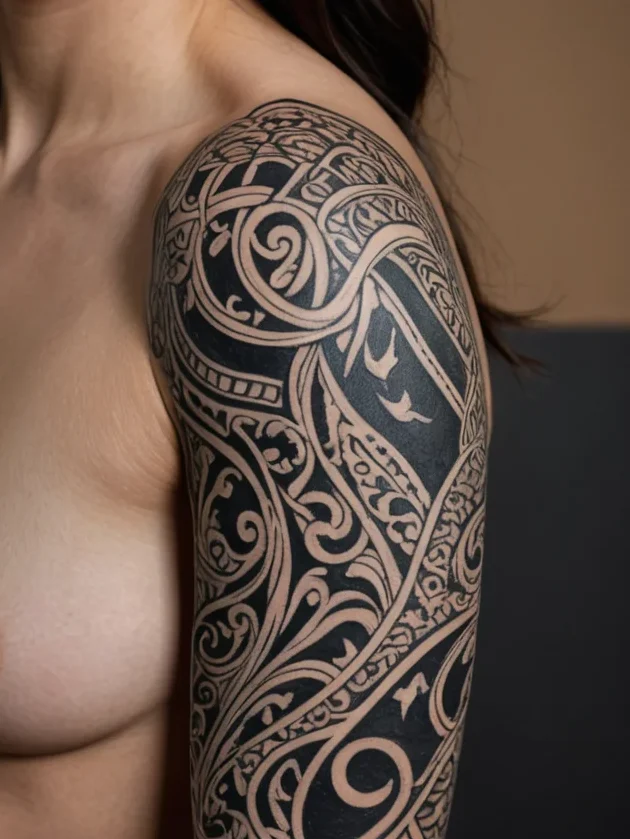
When the term “bodysuit” is mentioned in tattoo circles, it immediately conjures images of extensive, meticulously integrated designs that wrap around the human form, often covering a significant portion of the body – from the torso and back to the arms and legs, sometimes even extending to the neck and hands. This is not simply a collection of large tattoos placed side-by-side; a true bodysuit is characterized by its seamless flow, thematic unity, and the way it harmonizes with the body’s anatomy, accentuating muscle contours and natural lines. It is an architectural marvel of ink, custom-fitted to your unique structure, making your body itself a living sculpture.
The commitment involved in a bodysuit project is unparalleled. Consider the sheer volume of time required: a full bodysuit can easily demand hundreds, if not thousands, of hours under the needle, spread out over several years. Each session, typically ranging from four to eight hours, requires immense physical endurance and mental fortitude. This isn’t a sprint; it’s a marathon, demanding sustained patience and a high pain threshold over an extended period. The financial investment is equally substantial, often reaching into the tens of thousands of dollars, reflecting the artist’s unparalleled skill, the quality of materials, and the sheer labor involved in such a monumental endeavor. This is an investment not just in art, but in a lifelong transformation of your physical identity.
Beyond the tangible aspects of time and money, a bodysuit signifies a profound psychological and personal commitment. It is a decision to permanently alter your external self, to wear your narrative, beliefs, and aesthetic preferences on your skin for the rest of your life. This can be a deeply transformative process, offering a unique opportunity for self-discovery and empowerment. For many, it’s a reclamation of their body, a way to heal, to celebrate, or to simply express an inner world that defies conventional boundaries. The permanence means there is no easy path back; therefore, introspection and absolute clarity of intent are essential before embarking on such a life-altering artistic journey.
Historically, full body tattooing has held deep cultural and spiritual significance across various civilizations, from the intricate Irezumi of Japan to the tribal markings of indigenous peoples worldwide. These were not mere decorations but potent symbols of status, lineage, protection, and spiritual connection. While contemporary Western bodysuit culture often emphasizes individual artistic expression, the underlying resonance of profound personal narrative and commitment remains. You are not just getting tattooed; you are engaging in a modern ritual of self-creation, crafting a legacy on your own skin.
Crafting your canvas: Defining your bodysuit’s vision & theme
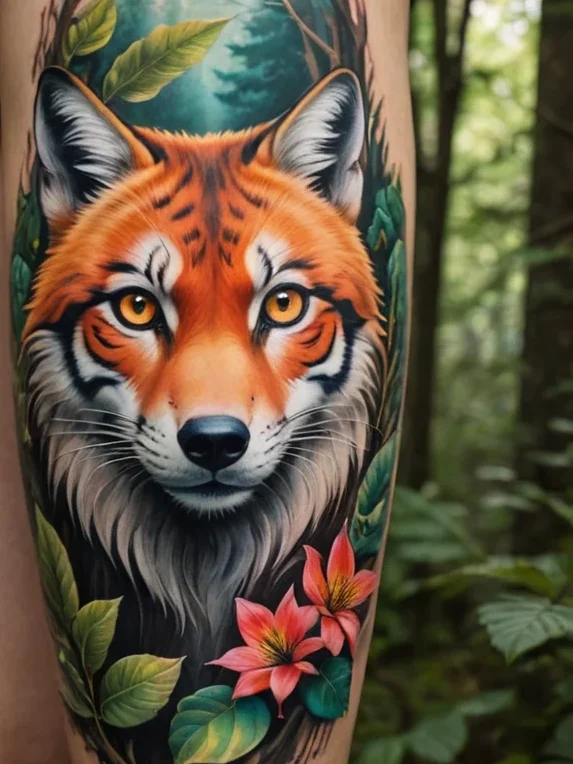
The foundation of any successful tattoo bodysuit lies in a meticulously defined vision and a cohesive theme. Without a unifying concept, even the most beautiful individual pieces can devolve into a disjointed collection, lacking the seamless flow and integrated artistry that defines a true bodysuit. Think of your body not as a scrapbook of ideas, but as a single, monumental canvas awaiting a grand masterpiece. This initial conceptualization phase is arguably as crucial as the tattooing process itself, as it sets the entire trajectory for years of work.
Begin by delving deep into your personal interests, passions, cultural heritage, and life philosophy. What narratives resonate with you? What imagery consistently captures your imagination? Are you drawn to the timeless elegance of Japanese mythology, with its dragons, koi, and fierce samurai? Or perhaps the intricate mechanics of biomechanical art, where flesh and machine merge? Could it be the serene beauty of natural elements like flora and fauna, or the bold lines of traditional American imagery? Perhaps abstract patterns and geometric forms that play with light and shadow appeal most. The theme acts as the artistic glue, ensuring that all elements, no matter how diverse, contribute to a harmonious whole.
Consider the mood and feeling you wish to evoke. Do you envision a vibrant, energetic piece that bursts with color, or a more subdued, meditative design in black and grey? The chosen style will heavily influence this. Traditional Japanese Irezumi, for instance, is renowned for its dynamic flow and bold color palettes, while styles like blackwork or realism can create dramatic contrasts and intricate details. Some styles, such as large-scale Japanese traditional, illustrative, or certain forms of blackwork, lend themselves particularly well to the extensive coverage and anatomical wrapping required for a bodysuit, as they are inherently designed to interact with and enhance the body’s natural contours.
A critical aspect of crafting your vision is understanding how the design will interact with your body’s unique topography. A good bodysuit artist will emphasize the body’s flow, ensuring that the artwork moves with your musculature, wraps around curves, and highlights your physique rather than fighting against it. This often means thinking beyond flat images and envisioning how patterns and figures will distort and reform as your body moves. This requires an artist with a profound understanding of anatomy and three-dimensional design principles, which is why choosing the right master is so vital.
Once you have a general theme, begin to brainstorm specific elements. Identify primary subjects that will serve as focal points, secondary elements that provide supporting context or transition, and background elements (like wind bars, water, smoke, or abstract textures) that unify the entire composition and fill negative space. Consider a cohesive color palette; even if you opt for a vibrant spectrum, ensuring that the colors chosen complement each other and will age gracefully is key. Creating mood boards, sketching rough ideas, or simply journaling your thoughts can be incredibly helpful in solidifying your concept. Remember, this is a collaborative process with your chosen artist, but having a strong initial vision will provide them with an invaluable roadmap, ensuring the final masterpiece is a true reflection of your deepest self.
Finding your master: How to choose the right bodysuit artist & studio
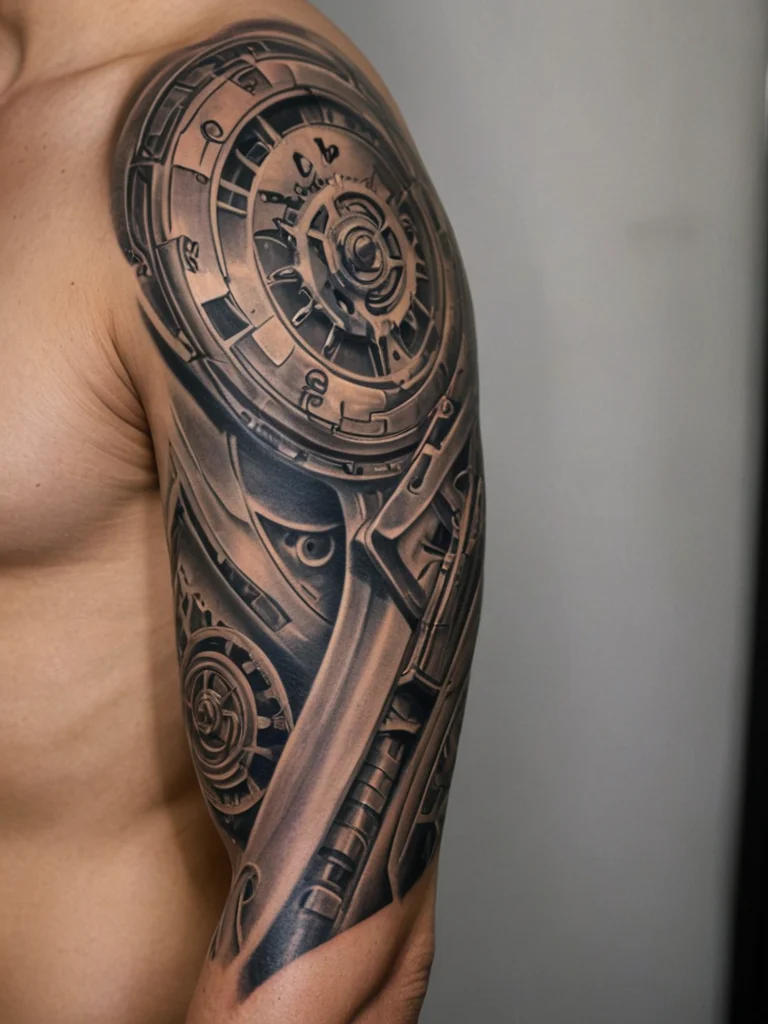
The selection of your tattoo artist for a bodysuit project is arguably the single most critical decision you will make. This individual will not merely be applying ink to your skin; they will be your artistic partner, your guide through a multi-year journey, and the architect of a living masterpiece that will define a significant part of your identity. This is not the time for compromise or choosing based solely on convenience or price. You are seeking a master, someone whose skill, vision, and professionalism align perfectly with the monumental task at hand.
The first and most important criterion is specialization and experience in large-scale work. Many talented tattoo artists excel at individual pieces, but very few possess the unique skill set required for a full bodysuit. You need an artist who consistently demonstrates expertise in expansive, cohesive compositions, not just isolated tattoos. Look for portfolios that showcase complete, healed bodysuits, back pieces, or full sleeves, not just smaller, individual tattoos. This demonstrates their ability to maintain consistency, flow, and technical quality over vast areas of skin and numerous sessions. If you are leaning towards a specific style, such as traditional Japanese Irezumi, a bio-mechanical suit, or an intricate blackwork design, ensure your prospective artist is a recognized specialist in that particular genre. A realism portrait artist, no matter how skilled, is unlikely to be the right choice for a full traditional Japanese bodysuit, and vice versa.
A thorough portfolio review is non-negotiable. Examine not only the aesthetics but also the technical execution. Look for clean, consistent linework, smooth and even shading, vibrant and well-saturated colors (if applicable), and intelligent use of negative space. Pay close attention to how the designs flow with the body’s anatomy – do they enhance the musculature and curves, or do they appear flat and disconnected? Healed photos are crucial, as they reveal how the ink settles into the skin over time, a true test of an artist’s skill. Many artists now use social media platforms like Instagram as their primary portfolio; scrutinize these accounts meticulously, but always aim to see their work in person if possible.
Once you’ve identified potential candidates, schedule a consultation. This initial meeting is invaluable. It’s your opportunity to discuss your vision in detail, listen to their artistic input, and gauge their enthusiasm for your project. A truly great artist will not just execute your ideas; they will enhance them, offering creative solutions, suggesting improvements, and sometimes even gently challenging your preconceptions to achieve the best possible outcome. Pay attention to their communication style and professionalism. Do they listen attentively? Do they explain their process clearly? Do you feel a sense of trust and rapport? Remember, you will be spending hundreds of hours with this person in a physically vulnerable state, so a comfortable and respectful relationship is paramount.
During the consultation, discuss practicalities: their pricing structure (hourly rates, per-session rates, or project-based fees), deposit requirements, cancellation policies, and their typical scheduling cadence for large projects. Be transparent about your budget, but understand that exceptional quality for a project of this magnitude comes at a premium. Never try to haggle over the price of a bodysuit; it undervalues the artist’s lifetime of dedication and skill. Finally, assess the studio environment. It should be impeccably clean, professional, and adhere to the highest standards of sterilization and hygiene. Check for proper licensing and certifications. Your safety and comfort are as important as the artistic outcome. Choosing your master is a journey of discernment, but one that ensures your bodysuit will be a source of pride and awe for decades to come.
The long haul: Navigating the design, session, and healing process
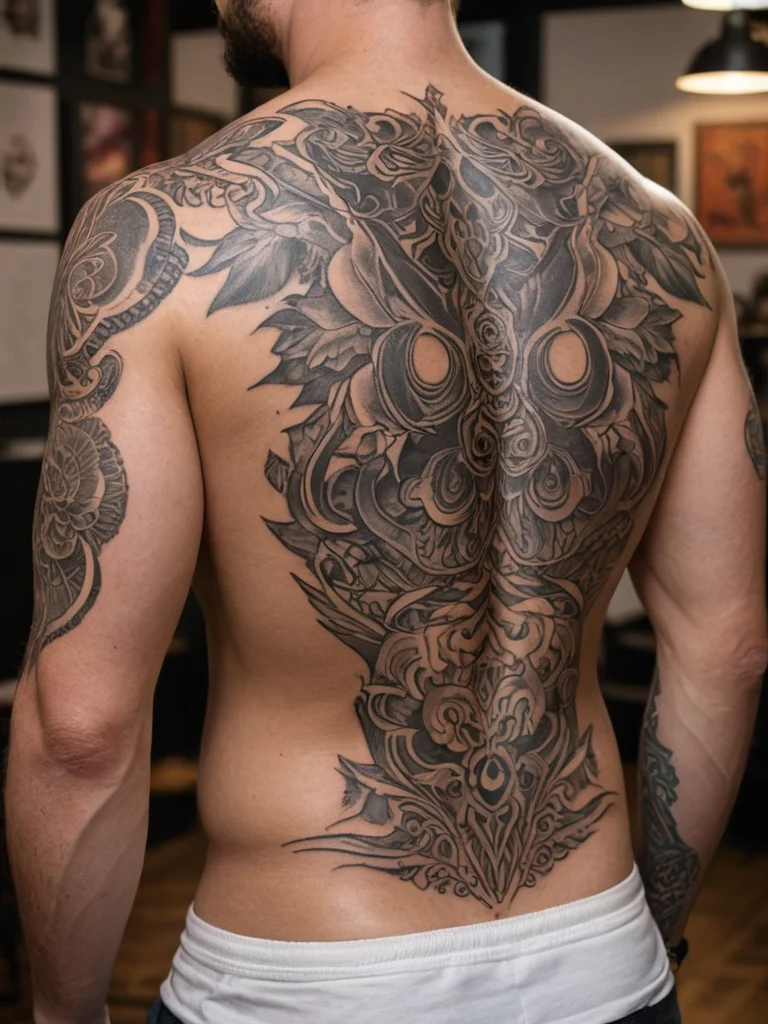
Embarking on a tattoo bodysuit is a testament to patience and perseverance, as the journey itself is as significant as the final destination. This multi-stage process requires diligent preparation, enduring sessions, and meticulous aftercare, all spread over an extended period. Understanding each phase will equip you with the mental and physical resilience needed to successfully complete your living masterpiece.
The design phase for a bodysuit is an intricate dance between your vision and your artist’s expertise, often lasting months before the first needle touches your skin. Unlike smaller tattoos where a design might be finalized in a single sitting, a bodysuit requires a grand architectural plan. Your artist will likely create large-scale drawings, sometimes even directly on your body with markers, to ensure perfect flow and fit. Many experienced bodysuit artists prefer to freehand significant portions of the design, especially the primary lines and background elements, as this allows for unparalleled customization to your unique anatomy. This method ensures that the artwork truly lives on your skin, moving and flexing with your body, rather than appearing as a static image. Be prepared for multiple revisions, open communication, and the understanding that the design will evolve organically throughout the process as the artist progressively fills in the canvas.
Once the design blueprint is established, the sessions begin. Bodysuit sessions are typically long, ranging from four to eight hours, though some artists and collectors opt for even longer sittings. Regularity is key for momentum and artistic consistency; weekly, bi-weekly, or monthly sessions are common. Prior to each appointment, preparation is crucial: ensure you are well-rested, thoroughly hydrated, and have eaten a substantial meal. Avoid alcohol and blood-thinning medications for at least 24-48 hours before your session. During the tattooing process, pain management becomes a significant factor. While topical numbing creams can be discussed with your artist, many prefer to work on natural skin for optimal ink saturation and healing. Focus on deep, steady breathing, communicate openly with your artist about discomfort, and don’t hesitate to request short breaks for stretching or rehydration. Distractions like audiobooks, podcasts, or music can also be incredibly helpful in managing the discomfort.
The healing process for a bodysuit is not a singular event but a continuous cycle that repeats after every session. Each freshly tattooed area will go through the typical stages of swelling, redness, oozing, scabbing, and itching. Strict adherence to your artist’s aftercare instructions is paramount to ensuring optimal healing and the longevity of your investment. This typically involves gentle washing with a mild, unscented soap, followed by a thin layer of recommended moisturizer, or the application of specialized protective bandages like Saniderm or Tegaderm, which can significantly simplify the initial healing phase. During healing, avoid direct sun exposure, swimming pools, hot tubs, and excessive sweating, as these can compromise the healing process and potentially damage the fresh ink. Wear loose, breathable clothing to prevent irritation. Understand that a tattoo will look different during the healing phase – it may appear dull, cloudy, or flaky – this is normal and part of the process before the true vibrancy of the ink emerges. Your dedication during the healing periods is just as important as your endurance during the tattooing sessions.
Preserving your legacy: Long-term care and living with a bodysuit masterpiece
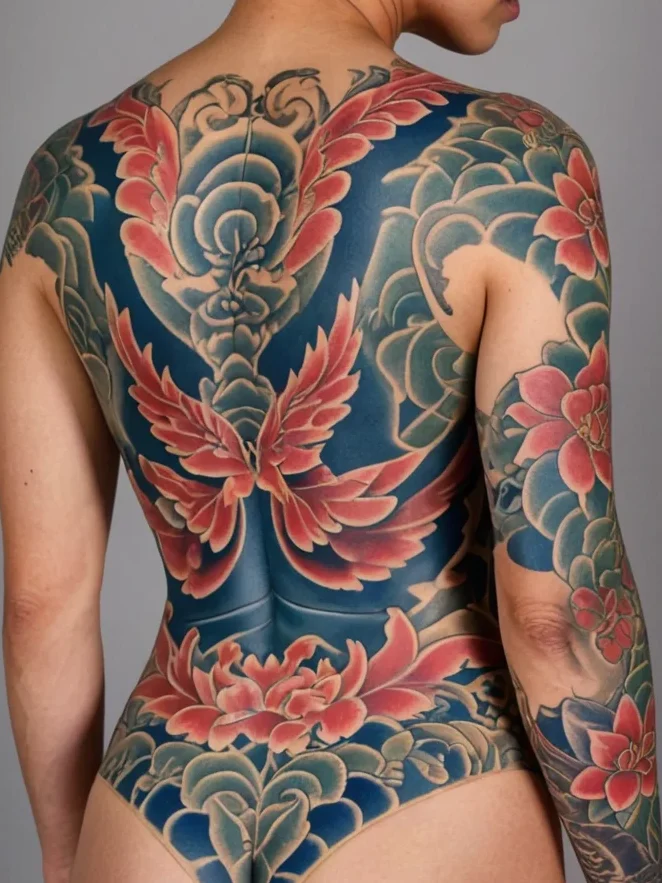
Completing a full tattoo bodysuit is an extraordinary achievement, a profound personal journey culminating in a living, breathing work of art. Yet, the journey doesn’t end when the final needle passes. A bodysuit is a lifelong investment that requires ongoing care and mindful living to ensure its vibrancy, clarity, and beauty endure for decades. This masterpiece on your skin is a testament to your commitment, and its preservation rests in your hands.
The single most critical aspect of long-term tattoo care, especially for an extensive piece like a bodysuit, is rigorous sun protection. Ultraviolet (UV) radiation is the primary enemy of tattoo ink, causing it to break down, fade, and blur over time. Develop a habit of applying a high-SPF, broad-spectrum sunscreen (SPF 30 or higher) to all exposed tattooed skin whenever you are outdoors, even on cloudy days. Alternatively, wear UPF-rated clothing that physically blocks UV rays. Think of your bodysuit as a prized painting; you wouldn’t hang it in direct sunlight, and the same principle applies to your skin canvas. Consistent moisturizing also contributes significantly to ink longevity. Keeping your skin supple and hydrated with a good quality, unscented lotion helps the colors stay vibrant and the lines remain crisp, much like conditioning fine leather.
Over the years, even with the best care, some areas of a bodysuit may require touch-ups. High-friction areas, such as elbows, knees, armpits, or areas that receive frequent sun exposure, might fade or lighten more quickly than others. It’s wise to budget for occasional touch-up sessions with your artist every few years to maintain the integrity and brilliance of your artwork. Think of this as routine maintenance for a cherished possession. Maintaining a healthy lifestyle, including good nutrition and hydration, also contributes to overall skin health, which in turn supports the longevity and appearance of your tattoos. While drastic weight fluctuations can potentially distort expansive designs, moderate changes are generally accommodated by the skin’s elasticity.
Living with a bodysuit masterpiece is a unique experience. It becomes an integral part of your identity, often enhancing confidence and serving as a constant reminder of your personal journey and artistic expression. Be prepared for reactions from others: curiosity, admiration, and occasionally, judgment. You will become a walking conversation piece, inspiring questions and sometimes initiating profound discussions about art, symbolism, and personal transformation. In professional settings, while societal acceptance of tattoos has grown immensely, consider the visibility of your bodysuit for certain careers. Many find that strategically placed clothing can manage visibility when required, but it is a consideration to acknowledge.
Ultimately, your bodysuit is more than just ink; it’s a narrative woven into your very being, a lifelong conversation piece, and a profound declaration of self. It is a testament to resilience, dedication, and a deep connection to the art form. The journey of acquiring and living with a bodysuit is transformative, a continuous process of self-discovery and appreciation for the magnificent artistry you carry. It is a legacy etched in your skin, truly one of the most powerful and enduring forms of personal expression imaginable.